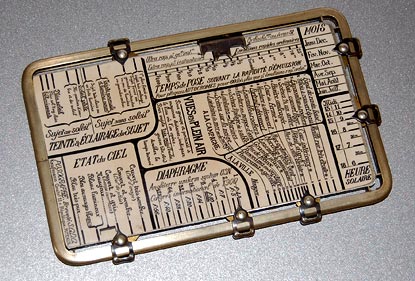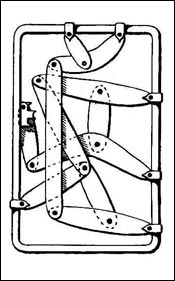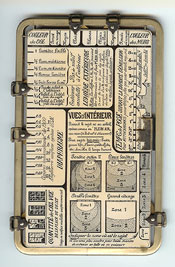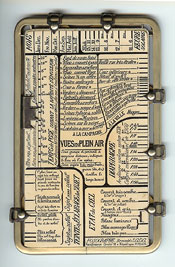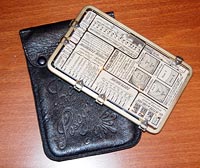
|

|
At first glance this is just a small
rectangular plate, about 13 x 8 cm, covered with dense scribbles,
with seven pointers fixed to its frame. Then you realize that the
pointers are not fixed, but can slide on the frame… and then you
note that they are somehow interconnected -- moving any of the small
ones will move the larger one this way or that. Strange. But when
you see the diagram of the inner mechanism you realize what this is,
and it can take your breath away (well, if you’re a techie like me
it sure can).
Kaufmann’s Posographe is nothing less than an analog
mechanical computer for calculating six-variable functions.
Specifically, it computes the exposure time (Temps de Pose) for
taking photographs indoors or out (depending on which side you use).
The input variables are set up on the six small pointers; the large
pointer then gives you the correct time. The variables are very
detailed, yet endearingly colloquial. For outdoors, they include the
setting -- with values like “Snowy scene”, “Greenery with expanse of
water”, or “Very narrow old street”; the state of the sky -- including “Cloudy and somber”, “Blue with white clouds”, or “Purest
blue”; The month of the year and hour of the day; the illumination
of the subject; and of course the aperture (f-number).
|

 Up
Up


